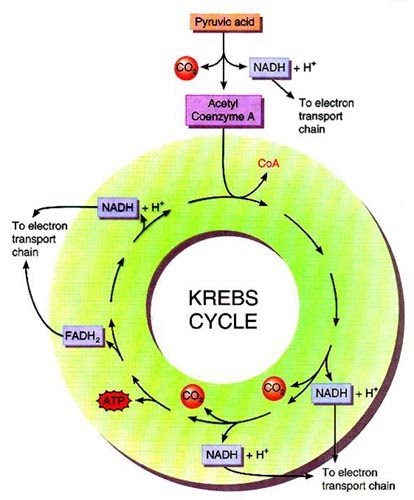Edexcel A2-Level Biology
-
Sample content (FREE TO VIEW)3 Lessons
-
5. Energy for Biological Processes7 Lessons
-
6. Microbiology and Pathogens7 Lessons
-
7. Modern Genetics4 Lessons
-
8. Origins of Genetic Variation3 Lessons
-
9. Control Systems9 Lessons
-
?? Homeostasis
-
? Chemical Control in Mammals
-
? Chemical Control in Plants
-
? Structure and function of the mammalian nervous system
-
? Nervous transmission
-
? Effects of drugs on the nervous system
-
?️ Detection of light by mammals
-
? Control of heart rate in mammals
-
⚖️ Osmoregulation and temperature regulation
-
?? Homeostasis
-
10. Ecosystems4 Lessons
⚙️ Link reaction and Krebs cycle (FREE TO VIEW)
The A Level Biologist - Your Hub February 25, 2020
The pyruvate proceeds to being oxidised to a compound called acetyl coenzyme A upon reaction with coenzyme A which results in the production of yet another NADH and, voila! a carbon dioxide molecule, our first ever CO2; please welcome it graciously…
So far we’ve got 2 ATP, 3 NADH and 1 CO2 – not that impressive, onwards and upwards!
P.S.: the pyruvate –> acetyl-CoA step isn’t part of glycolysis, (it’s called the link reaction) I just tagged it along to have 3 steps overall rather than 4. Magic numbers and all that.
2. The citric acid (Krebs) cycle
The previously produced acetyl-CoA gets oxidised to carbon dioxide, while NAD continues to be reduced to NADH. The CO2 gets eliminated when we exhale, while the NADH is passed onto the next and final step of aerobic respiration.
The Krebs cycle is a series of reduction-oxidation reactions (redox reactions) which produce multiple coenzymes. Coenzymes are molecules which assist enzymes in their catalysing activity.

